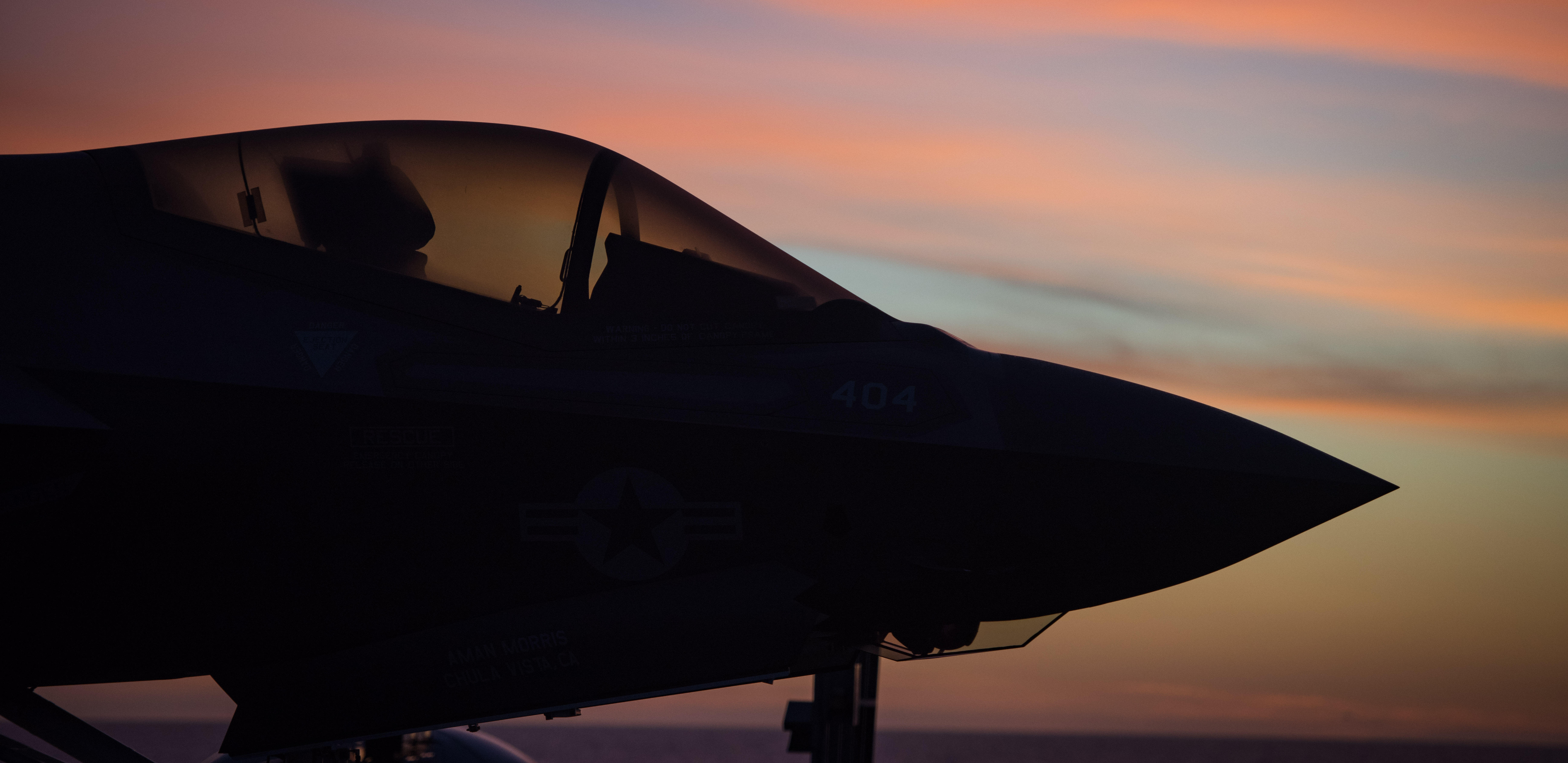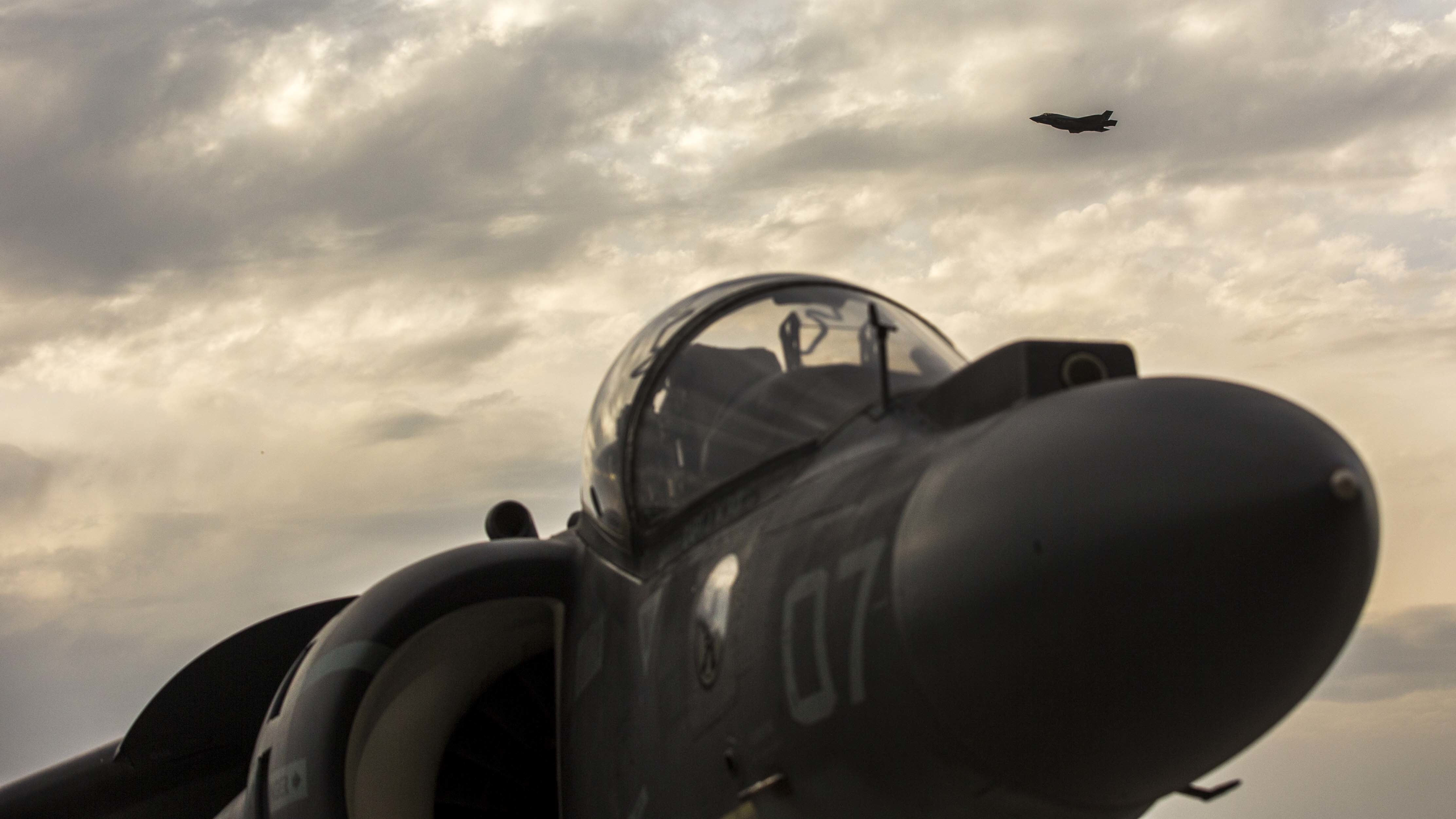
An F-35C Lightning II assigned to the “Argonauts” of Strike Fighter Squadron (VFA) 147 sits chained on the flight deck of the Nimitz-class aircraft carrier USS Carl Vinson (CVN-70) on Dec. 9, 2018. US Navy Photo
CAPITOL HILL – The Marine Corps is accelerating its F-35C carrier variant Joint Strike Fighter procurement and slowing its F-35B vertical landing variant to support Navy deployment requirements, the Marines’ top aviator told lawmakers today.
In its Fiscal Year 2020 budget request the Marines asked for 10 fewer F-35Bs; in the budget’s projection for outyears, the service dropped its planned F-35B buys by five F-35Bs in 2021 and three in FY 2022. For the F-35C, though, the service increased its request by nine planes in the five-year Future Years Defense Program.
Lt. Gen. Steven Rudder, deputy commandant of the Marine Corps for aviation, told the House Armed Services tactical air and land forces subcommittee that those changes were meant to support upcoming deployments.
With the Marine Corps on the hook for some of the planned F-35C carrier strike group deployments, “we rebalanced this year with more Cs – just really more to catch up. Now that we have begun training our first F-35C squadron up in Lemoore, we will be the second carrier deployment with the United States Navy with our F-35Cs,” Rudder said.
The Navy’s Strike Fighter Squadron (VFA) 147 will conduct the first deployment with the F-35C integrated into the carrier air wing, and Marine Fighter Attack Squadron (VMFA) 314 will conduct the second F-35C carrier deployment.

An F-35B Lightning II with Marine Fighter Attack Squadron 211, 13th Marine Expeditionary Unit, flies over an AV-8B Harrier during the Bahrain International Airshow (BIAS) 18 on Nov. 16, 2018. US Marine Photo
Rear Adm. Scott Conn, the Navy’s director of air warfare (OPNAV N98), said at the hearing that the Navy and Marine Corps would continue to rotate which service transitions the next squadron to the F-35C until about 2026 or 2027.
The Marine Corps hasn’t changed how many of each variant it plans to buy, but the new emphasis on F-35Cs and a slowing of F-35Bs will allow the small service to keep up with the latest squadron transition and deployment plans.
Marine Corps spokesman Capt. Christopher Harrison told USNI News that, as part of the rebalance in the FY 2020 budget request, “the Marine Corps increased its procurement of F-35Cs over the FYDP from 19 to 28 F-35Cs to ensure the service would be able to transition its F-35C squadrons on schedule. Specifically, the Marine Corps increased its F-35C procurement in 2020 to ensure TACAIR Integration (TAI) F-35C Squadrons make their planned transition and timeline for deployment. The Corps’ approved Program of Record remains 353 F-35Bs and 67 F-35Cs.”
To support accelerating F-35C acquisition, the Marines will decelerate F-35B procurement, “deferring several F-35B aircraft into future [low-rate initial production] contracts in order to balance concurrency management while taking advantage of emerging future technologies and capabilities,” Harrison said.
That balance of models still heavily favors the F-35B that will operate from amphibious assault ships, but Rudder said the commonality between the B and C will give the service flexibility to move pilots and maintainers between B and C squadrons and will reduce the training and maintenance burden.
Previously, the Marine Corps operated three types of fixed-wing aircraft: the EA-6B Prowler electronic attack aircraft, the AV-8B Harrier vertical landing strike aircraft, and the F-18 Hornet fighter. Each had its own separate training pipeline for pilots and maintainers and a separate logistics chain for spare parts.
“What that means is, for our small 18 squadrons … we’ll be able to mix pilots back and forth between the B and C; one simulator. One maintainer, one supply account. And that creates efficiency for us,” Rudder said.
“For us to stay with the fourth-gen, we’ve got to keep a whole other institution for our fourth-gen fighters. For fifth-gen for us, for the business model, one type aircraft is efficient and affordable.”
Rudder said that today, the Marine Corps has about 80-percent fourth-generation aircraft – Harriers and Hornets, with the Prowlers retiring last month – and 20-percent fifth-generation aircraft. That 80/20 balance will have reversed by 2028, and by 2030 the Marines should be fully into the F-35 for all its fixed-wing squadrons.
Whether his Marines are on amphibs in the F-35B or on carriers in the F-35C, Rudder stressed the importance of the Joint Strike Fighter for potential future fights.
“As we look at, for us, the Marine Corps being an inside force and we are deployed forward … I think if you look at the competition from 2025 into 2030, fifth-gen for us as an inside force will be required to win.”
